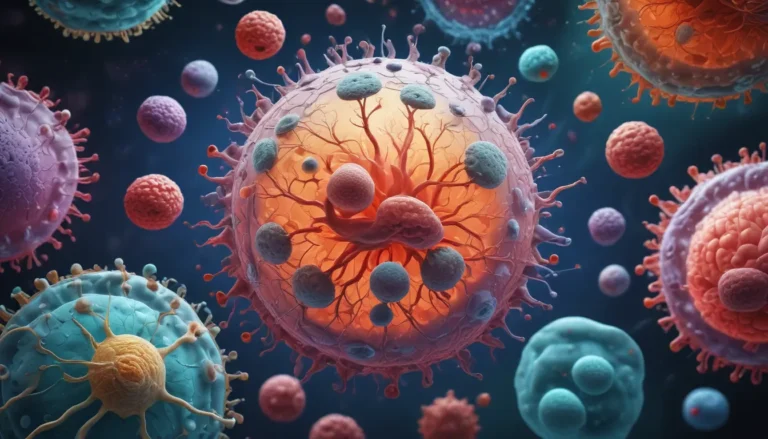A Note About Images: The images used in our articles are for illustration purposes only and may not exactly match the content. They are meant to engage readers, but the text should be relied upon for accurate information.
Welcome to the mesmerizing world of nucleotides, the fundamental building blocks of life that hold the key to countless biological mysteries. These incredible molecules are at the core of an intricate web of biological processes, from storing genetic information to powering cellular functions. In this article, we will embark on a journey to unravel the remarkable secrets of nucleotides, exploring their unique properties, diverse functions, and profound impact on the intricate workings of living organisms. Whether you’re a biology enthusiast or simply curious about the wonders of life, prepare to be amazed by the mesmerizing world of nucleotides.
Unveiling the Marvels of Nucleotides: A Deep Dive into Life’s Blueprint
Nucleotides are not just ordinary molecules; they are the essence of life itself. These organic compounds play a crucial role in shaping the genetic materials DNA and RNA, laying the foundation for all living organisms. Comprising a nitrogenous base, a sugar molecule, and a phosphate group, nucleotides form the backbone of DNA and RNA, carrying the genetic instructions that dictate an organism’s characteristics and functions.
Delving into the Diversity of Nucleotides: The Essence of Genetic Codes
At the heart of nucleotides lie the nitrogenous bases – adenine (A), thymine (T), cytosine (C), and guanine (G) – in DNA, with uracil (U) replacing thymine in RNA. The intricate sequence of these bases in the DNA molecule orchestrates the genetic code, orchestrating the complex machinery of protein synthesis and cellular functions.
Unleashing the Power of Nucleotides: Energy Transfer and Cellular Signaling
Adenosine triphosphate (ATP), a vital nucleotide, acts as the primary energy currency in cells, fueling various metabolic processes. Nucleotides like cyclic adenosine monophosphate (cAMP) serve as secondary messengers in cell signaling pathways, triggering intricate cellular responses such as gene expression, enzyme activation, and cell growth.
Exploring the Architectural Beauty of Nucleotides: Building Blocks of DNA and RNA
Nucleotides play a pivotal role in maintaining the structural stability of DNA and RNA. Through the formation of hydrogen bonds between complementary bases and the robust backbone provided by phosphate groups, nucleotides sculpt the iconic double-helix structure of DNA and the intricate secondary structure of RNA, essential for preserving genetic integrity.
Unraveling the Mysteries of Nucleotides: From Modification to Repair
Nucleotides are not static entities; they can undergo chemical modifications that alter their function and stability. Methylation, phosphorylation, and acetylation are examples of modifications that influence gene expression and cellular activities. Moreover, nucleotides are integral to the DNA repair process, ensuring the fidelity of genetic information and safeguarding against mutations.
Harnessing the Therapeutic Potential of Nucleotides: A Gateway to Medical Innovations
Beyond their foundational role in biology, nucleotides and nucleotide analogs offer therapeutic applications in medicine. These compounds are harnessed in various interventions, including antiviral medications that impede viral replication and chemotherapy drugs that disrupt DNA synthesis in cancer cells, exemplifying the remarkable versatility of nucleotides in combating disease.
Embracing the Complexity of Protein Synthesis: A Symphony of Nucleotide Instructions
Nucleotides act as the guiding force behind protein synthesis, as messenger RNA (mRNA) carries genetic instructions from DNA to ribosomes. The intricate sequence of nucleotides in mRNA directs the assembly of amino acids into proteins, orchestrating the blueprint for cellular functions and biological processes.
Paving the Path to Genetic Diversity: Nucleotides and Evolutionary Adaptations
Genetic variability, triggered by nucleotide sequence variations and mutations, plays a pivotal role in shaping the diversity of living organisms. These genetic alterations lead to phenotypic variations, driving evolutionary adaptations and genetic diseases, underscoring the intricate relationship between nucleotides and the diversity of life.
In conclusion, nucleotides are not mere components of biological machinery; they are the essence of life’s intricate tapestry. From their foundational role in DNA and RNA to their involvement in energy transfer, cell signaling, and therapeutic applications, nucleotides stand as pillars of biological complexity. As we uncover these 11 unbelievable facts about nucleotides, let us marvel at the profound significance of these molecules in shaping life on our planet.
Exploring Further: Navigating the World of Nucleotides and Genetics
Embark on a captivating exploration of stop codons, genetic mutations, and the extraordinary functions of nucleotides to deepen your understanding of the enthralling world of genetics. Discover the intricate mechanisms that govern DNA replication, repair, and protein synthesis, unlocking the secrets of life’s blueprint encoded in nucleotides.
Delve Deeper into the Essence of Life: Unraveling the Mysteries of Nucleotides
Our journey into the realm of nucleotides and genetics has only just begun. Join us in uncovering the intricate web of biological complexity woven by nucleotides and their pivotal role in shaping life on Earth. As we continue to unravel the wonders of nucleotides, let us celebrate the beauty and brilliance of these essential building blocks that define the essence of life itself.
FAQs: Your Questions Answered
-
What are nucleotides, and how do they function in living organisms?
Nucleotides are organic molecules that serve as the building blocks of DNA and RNA, carrying genetic information and participating in various cellular processes. -
How do nucleotides contribute to energy transfer and cell signaling?
Nucleotides like ATP act as energy carriers in cells, releasing energy for metabolic processes, while molecules like cAMP act as second messengers in cell signaling pathways. -
Can nucleotides be modified, and what impact do these modifications have on cellular activities?
Nucleotides can undergo chemical modifications that alter their function and stability, influencing gene expression, DNA repair, and other cellular processes. -
What therapeutic applications do nucleotides have in medicine?
Nucleotides and nucleotide analogs are utilized in therapeutic interventions, such as antiviral medications and chemotherapy drugs, targeting specific cellular processes to combat disease. -
How do nucleotides contribute to genetic variability and evolutionary adaptations?
Nucleotide sequence variations and mutations drive genetic variability, leading to phenotypic variations and serving as the basis for evolutionary adaptations and genetic diseases.
Embrace the journey into the captivating world of nucleotides, where every discovery brings us closer to unraveling the profound mysteries of life’s blueprint. Join us in celebrating the beauty and complexity of these life-sustaining molecules and their invaluable contributions to the wonders of biological existence.






